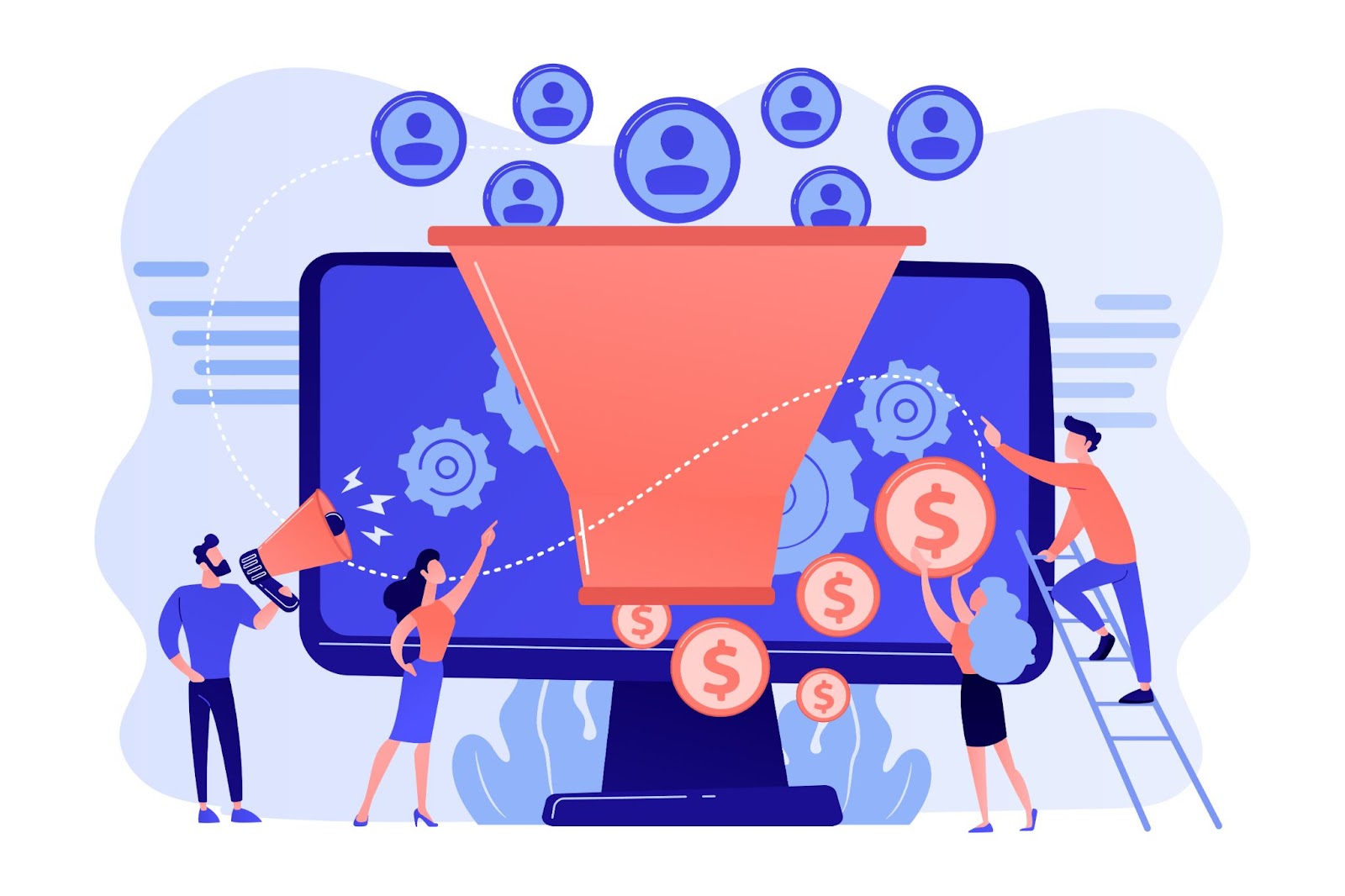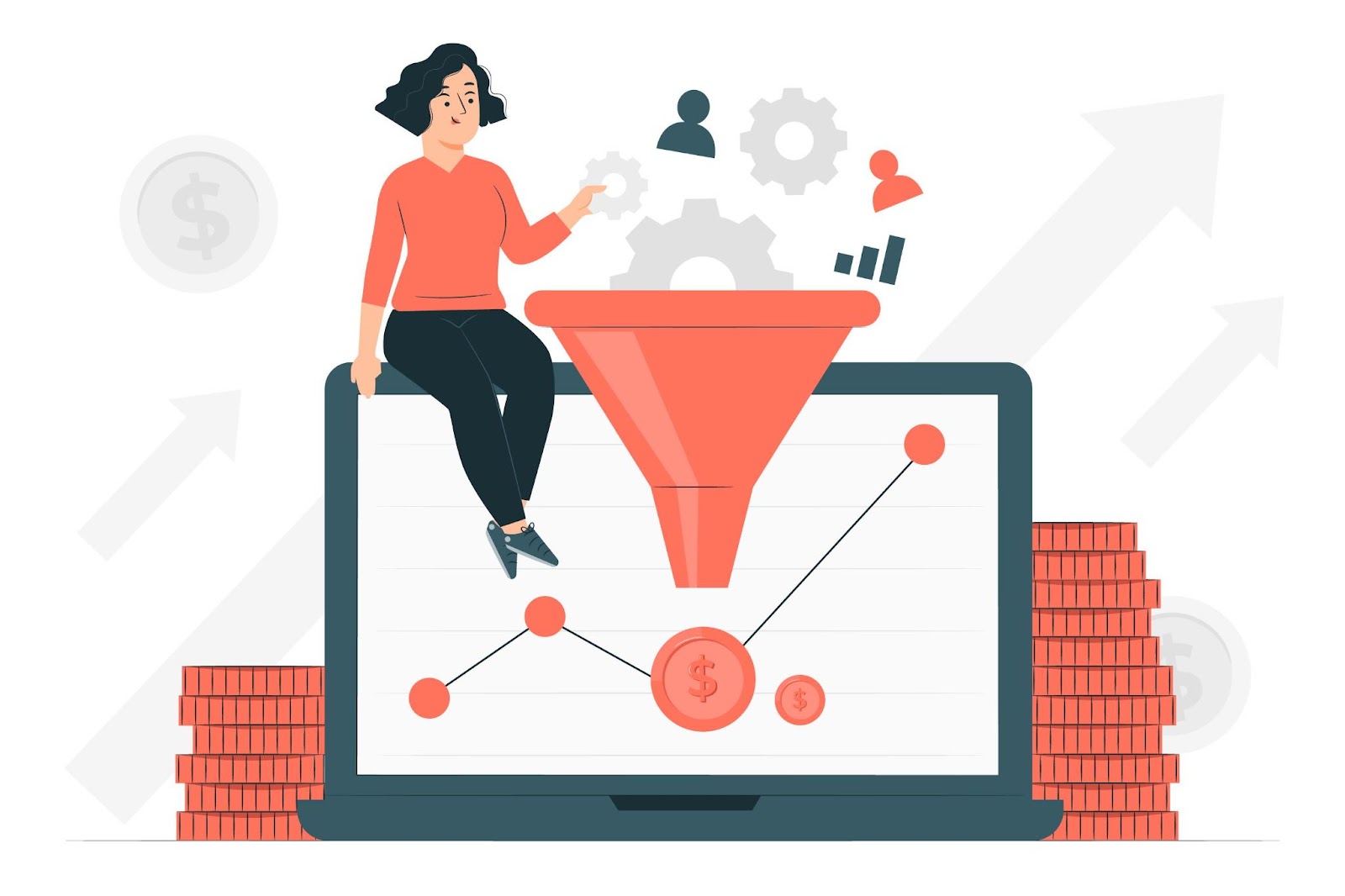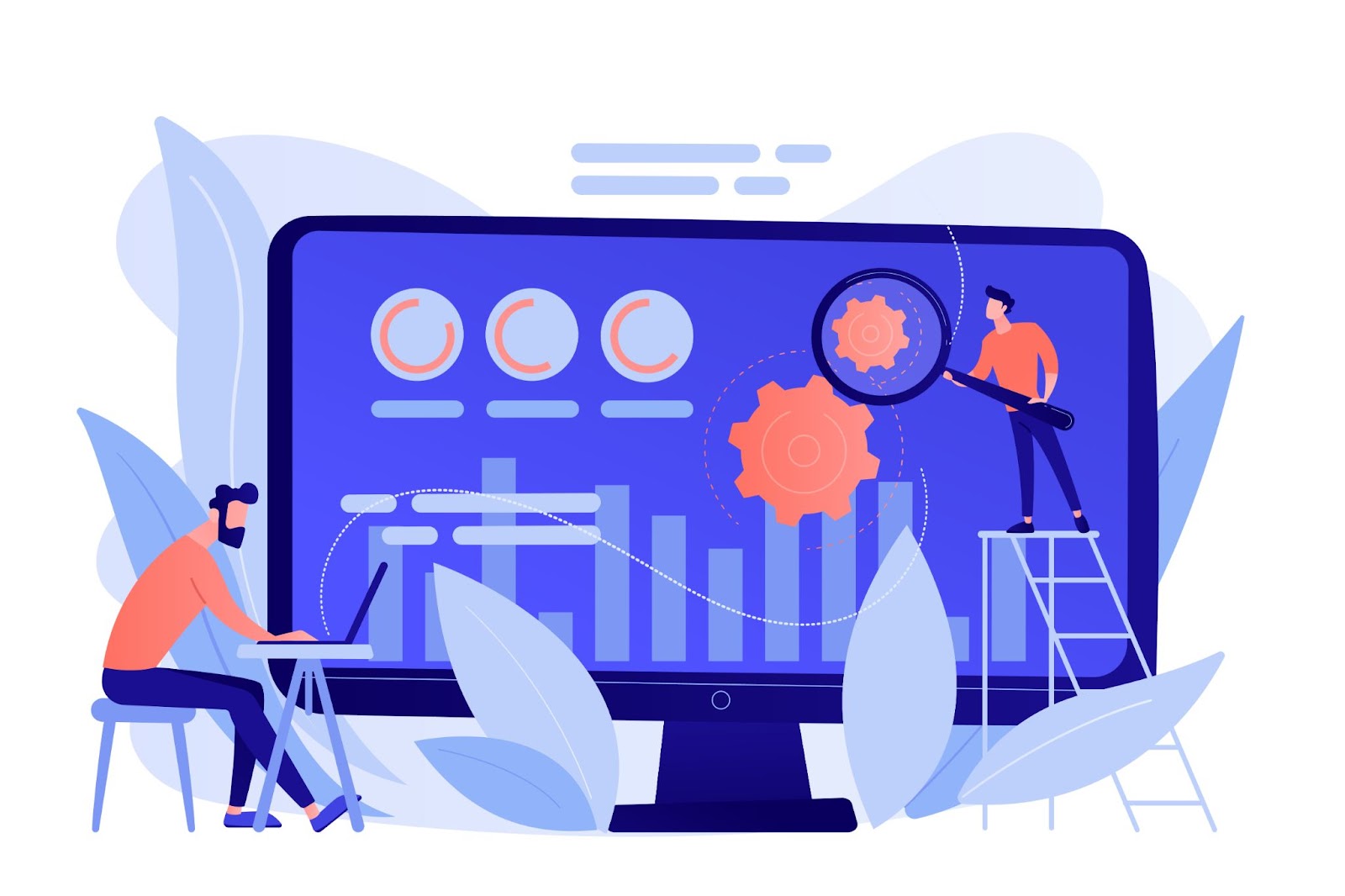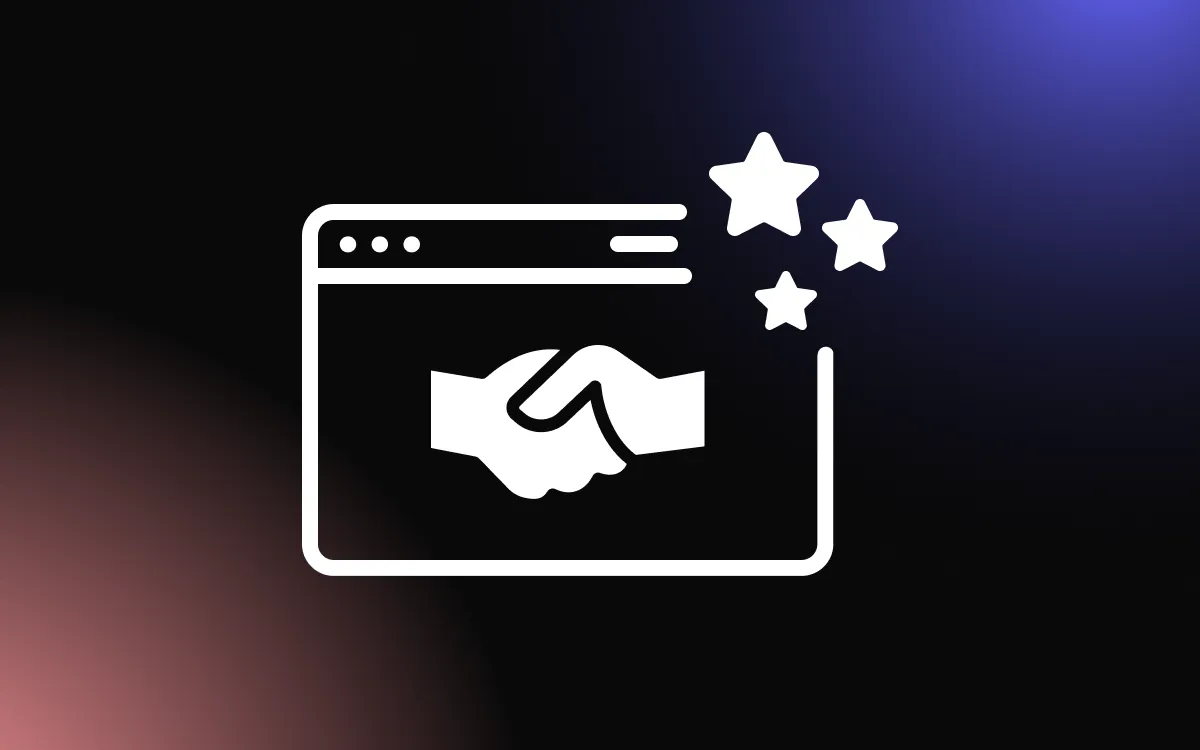
Nurturing leads through the sales funnel is a crucial part of turning potential customers into loyal buyers. Many businesses struggle with keeping prospects engaged and moving them from awareness to decision-making.
Effective lead nurturing involves providing timely, relevant content, personalizing communications, and building trust throughout the process.
This article will explore proven tactics for nurturing leads at each stage of the sales funnel, from initial contact to conversion, helping you optimize your strategy and drive more sales.
Understanding the Sales Funnel
The sales funnel is a visual representation of the customer journey, showing how prospects move from awareness to conversion.
It breaks down the process into stages, helping businesses track and optimize their sales and marketing efforts to guide leads through the funnel effectively.
Definition and Stages of the Sales Funnel
The sales funnel consists of several key stages: awareness, interest, decision, and action. At the top of the funnel, potential customers become aware of your brand or product.
As they move down, they express interest, evaluate options, and ultimately make a decision to purchase. Each stage requires specific strategies to engage, educate, and convert leads.
Importance of Lead Nurturing
Lead nurturing is essential for moving prospects through the sales funnel, especially in the middle stages. By providing relevant content, personalized communication, and timely follow-ups, businesses can build trust and guide leads toward making a purchase.
Effective lead nurturing ensures that potential customers remain engaged and are more likely to convert into paying customers, reducing drop-off rates and improving overall sales success.
Initial Contact and Lead Capture Tactics
Capturing leads at the top of the sales funnel is a crucial step in driving prospects toward conversion.
By employing effective landing pages, offering valuable incentives, and leveraging social media for engagement, businesses can attract potential customers and nurture them through the sales process.
Effective Landing Pages
Landing pages are often the first point of contact for prospects, making their design and functionality essential for lead capture. An effective landing page should be focused, visually appealing, and concise.
The page must have a clear call-to-action (CTA) and minimize distractions to ensure visitors understand what’s being offered and what action they need to take.
Forms should be simple, requesting only the most necessary information (such as name and email), to lower friction and increase conversions.
Incorporating trust signals like testimonials or trust badges can also enhance credibility, improving the likelihood of capturing leads.
Incentives for Lead Capture (e.g., eBooks, Webinars)
Offering valuable incentives is a proven way to encourage visitors to provide their contact information.
Free eBooks, guides, webinars, and exclusive content are highly effective lead magnets that exchange value for a prospect’s contact details. These incentives should be tailored to the needs and interests of your target audience, providing information that solves a problem or adds value.
For example, an eBook with expert insights or a webinar offering in-depth training can attract qualified leads genuinely interested in your product or service. The key is ensuring that the incentive aligns with the stage of the buyer’s journey, offering something relevant and compelling.
Utilizing Social Media for Initial Engagement
Social media platforms are excellent channels for initial engagement and lead capture. By sharing content, running targeted ads, and encouraging conversations, businesses can generate interest and direct prospects to landing pages or lead capture forms.
Social media ads, in particular, allow businesses to target specific demographics and interests, ensuring they reach the right audience at the right time.
Additionally, features like Facebook Lead Ads or Instagram’s swipe-up links simplify the process of capturing leads directly through the platform, making social media a vital tool in the early stages of the sales funnel.
Educating and Nurturing Leads
Once leads are captured, educating and nurturing them is crucial to guide them through the middle stages of the sales funnel.
By leveraging content marketing strategies, personalized email campaigns, and customer relationship management (CRM) tools, businesses can build trust, provide value, and encourage prospects to take the next step toward conversion.
Content Marketing Strategies
Content marketing is a powerful tool for educating leads and positioning your business as an authority in your industry. Blogs, case studies, videos, and infographics that address the pain points of your audience can keep leads engaged and interested.
For example, creating in-depth guides or how-to articles helps answer common questions, while case studies showcase successful outcomes using your product or service.
Additionally, using targeted content that aligns with where the lead is in their buyer’s journey ensures you are providing the right information at the right time. By offering relevant, valuable content, you nurture leads by building trust and credibility, helping them move closer to making a purchase.
Personalized Email Campaigns
Email campaigns that are tailored to the needs and behaviors of leads significantly improve engagement and conversion rates. Segmented email lists allow businesses to send content relevant to each lead’s specific interests or actions, such as following up with leads who have downloaded a guide or attended a webinar. Personalized email content can include product recommendations, educational resources, or exclusive offers that resonate with the individual.
Drip email campaigns are particularly effective for lead nurturing, as they allow businesses to send a series of targeted messages that guide leads through the decision-making process at their own pace.
Utilization of CRM Tools for Personalization
CRM tools like HubSpot and Salesforce are invaluable for managing relationships and personalizing interactions with leads. These platforms allow businesses to track lead behavior, segment contacts, and automate personalized communication based on specific triggers, such as website visits or email opens.
By using CRM data to send targeted, timely messages, businesses can ensure that their outreach is highly relevant and engaging. CRM tools also allow sales teams to keep detailed records of interactions, ensuring that every communication is personalized and builds upon previous touchpoints, fostering stronger relationships with leads.
Conversion Tactics at Different Funnel Stages
As leads move through the sales funnel, different conversion tactics are needed to align with their decision-making process. Effective strategies at the middle of the funnel (MOFU) and bottom of the funnel (BOFU) are crucial to driving conversions and turning leads into customers.
Middle of the Funnel (MOFU) Strategies
In the MOFU stage, leads are already aware of your brand and are evaluating solutions. The focus here is to build trust and provide detailed information to help them make informed decisions. Tactics like webinars, product demos, and in-depth case studies work well in this stage.
Offering comparison guides or showcasing customer testimonials also helps establish credibility and demonstrate the value of your product or service. Personalized email sequences that offer tailored content based on the lead’s interactions can further nurture them toward a purchase decision.
Bottom of the Funnel (BOFU) Offers
At the BOFU stage, leads are ready to make a purchase, so the key is to offer compelling incentives that drive action. Tactics such as free trials, limited-time discounts, or exclusive consultations can motivate leads to take the final step.
Providing clear calls-to-action (CTAs) and ensuring that the purchase process is smooth and straightforward is crucial at this stage. Additionally, offering one-on-one sales consultations or personalized proposals can help address any remaining concerns and seal the deal.
Measuring and Optimizing Lead Nurturing
Effective lead nurturing requires ongoing measurement and optimization to ensure that your efforts are driving results. By focusing on key performance indicators (KPIs) and leveraging A/B testing, businesses can continuously improve their lead nurturing strategies.
Key Performance Indicators (KPIs)
To measure the success of lead nurturing, track essential KPIs such as email open rates, click-through rates (CTR), conversion rates, and the length of the sales cycle. Monitoring these metrics helps you understand which content and tactics are resonating with leads and which areas need improvement.
High engagement rates indicate that your nurturing efforts are effectively guiding leads through the funnel, while low engagement may signal the need for adjustments.
A/B Testing and Continuous Improvement
A/B testing allows businesses to experiment with different variations of emails, CTAs, and content to identify what works best.
By testing subject lines, messaging, or layouts, you can refine your approach and maximize engagement. Continuous improvement through testing and analysis ensures that your lead nurturing campaigns remain relevant and effective, ultimately driving better conversion rates and business outcomes.
Conclusion
In conclusion, effectively nurturing leads through the sales funnel requires a strategic approach that combines personalized communication, valuable content, and timely engagement. This article has outlined key tactics for guiding leads from awareness to purchase, ensuring that they stay engaged and informed throughout the journey.
By implementing these strategies, you can build stronger relationships with potential customers, improve conversion rates, and ultimately drive more revenue. Successful lead nurturing is essential for creating a smooth, efficient sales process that turns prospects into loyal customers.


